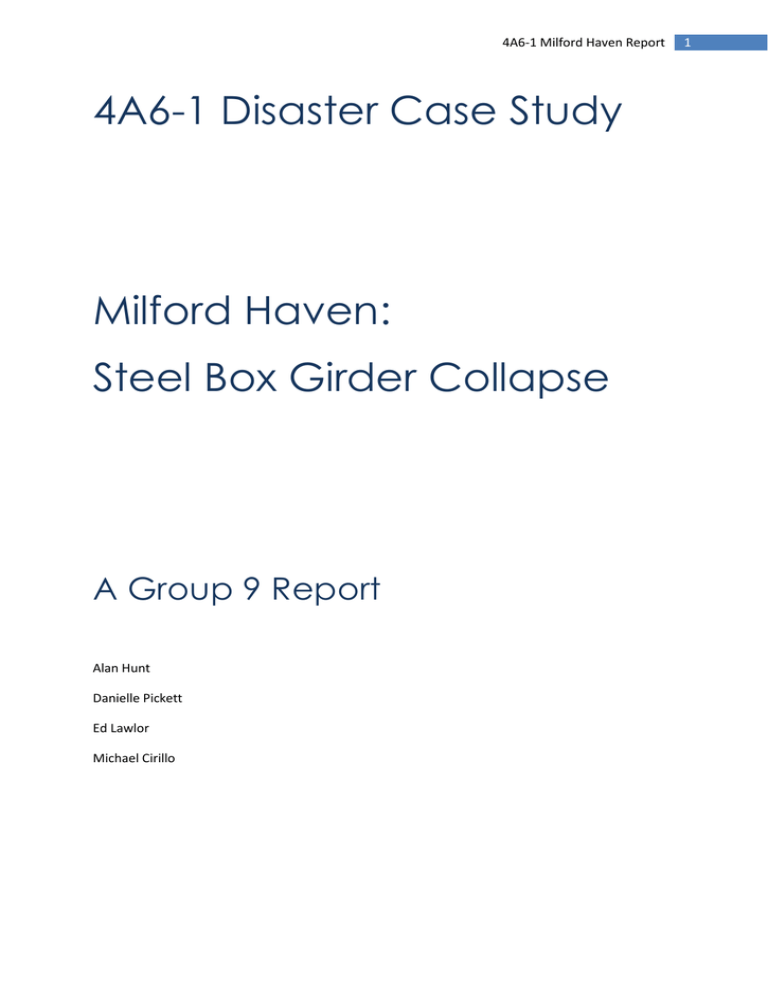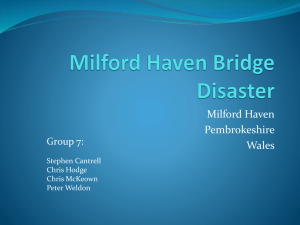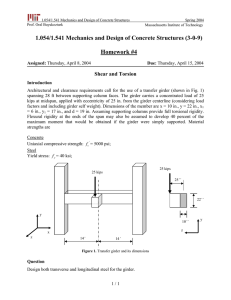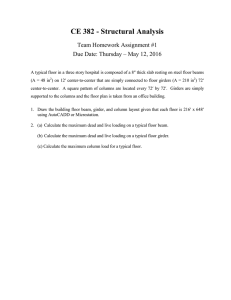4A6-1 Group 9 - Milford Haven.doc
advertisement

4A6-1 Milford Haven Report 4A6-1 Disaster Case Study Milford Haven: Steel Box Girder Collapse A Group 9 Report Alan Hunt Danielle Pickett Ed Lawlor Michael Cirillo 1 4A6-1 Milford Haven Report Introduction The Milford Haven Bridge, (now known as The Cleddau Bridge) spans 820m across the River Cleddau, between Neyland and Pembroke Dock in Wales. For this project, Sir Alexander Gibb & Partners, and Freeman Cox & Partners were appointed as joint Consulting Engineers, with the contract being awarded to A.E. Farr Ltd. Construction of the bridge began in 1969. The Bridge was designed to be continuous over seven spans from 76.8m to 213.4m. On 2nd June 1970, after the successful erection of the 1st span, the 2nd section collapsed as it was being cantilevered forward from Pier 1, killing 4 workers and injuring 5. After the incident, the design was modified and work restarted 3 years later, and completed in early 1975. Steel Box Girders Steel box girders are regularly used in bridge construction. Similar to an I-beam girder, they have two (or more) webs connecting the flanges. If more than two webs are used, multiple boxes are formed and this is known as a cellular girder. Fig 1.0 shows a simple box girder section. Figure 1.0 Typical box girder section The extra webs that exist in a box girder provide resistance to torsion. This is very important in bridges that have any curves incorporated in their design. Furthermore, the positioning of these webs ensures that the second moment of area (I) is maximized (i.e. greater than the second moment of area of an I-beam section). A higher I value provides a greater resistance to bending, which is, in this case, a desirable property of the girder. The fact that more than one single web exists means that wider and stronger flanges can be used. In turn, this allows larger spans to be achieved. Hence, the box girder was the girder of choice in the design of Milford Haven Bridge. However, its design used a more complex version of the box girder similar to an inverted trapezoid as shown in Fig. 1.1 below. 2 4A6-1 Milford Haven Report Figure 1.1 Trapezoidal box girder section This design is stronger and more efficient distributing loads than a simple box girder. The bridge itself consists of 48 of these box girders that are welded and bolted together forming a continuous section that behaves like a beam. Bridge Construction Construction of the bridge involved welding and bolting each of the steel sections to both abutments. Following this, every box girder section was attached onto the previous one creating a cantilever across the span until the opposite pier is reached (see fig. 1.2) Figure 1.2 Construction Schematic This design is well suited for the post-completion loads that will be active on the bridge. However, during the construction process very significant bending moments are created in the girder sections on the piers. 3 4A6-1 Milford Haven Report At present extra webs (membranes) are added to deal with these moments but during the construction of Milford Haven Bridge they were only incorporated into those girder sections on the piers. Failure & Collapse The collapse of the bridge was due mainly to the inadequacy of the pier support diaphragm (see “Bridge Construction”). A box girder section of half the design thickness was used. As a result this meant that the box girder was unable to resist the large moments that were created as it was constructed from the pier. The section essentially buckled around the pier due to its own weight. The lack of communication between the engineer and the site manager was also a factor in this disaster. The Merrison committee concluded that "the failure of site organisation between the parties as of more general significance". Figure 1.3 Bridge collapse Results & Effects It was discovered by the Merrison committee that the rules for steel box girder designs, contained in the BS153, were inadequate. The Interim Design and Workmanship Rules (IDWR) were then prepared by the committee, which contained the rules for box girder stress analysis. This resulted in the creation of a new British Standard (BS5400) for box girder designs. Consequently, this led to many major changes such as checking of designs and building methods, the handling of competitive tendering and clarification of the roles and responsibilities of the engineer and the contractor. 4 4A6-1 Milford Haven Report References http://en.wikipedia.org/wiki/Cleddau_Bridge www.webcitation.org/5VF7gzFhl VSL_United_Kingdom_Milford_Haven_Bridge_-_UK._(0780).pdf Bridge Loads, Colin O’Connor & Peter Arthur Shaw The Motorway Achievement, Ron Birdle & John Porter British Standards, BS5400 5

![R09 Milford_Haven_Bridge_collapse[1].doc](http://s2.studylib.net/store/data/015465362_1-bb07aa6fdf59abd6cc2325f232e56032-300x300.png)






